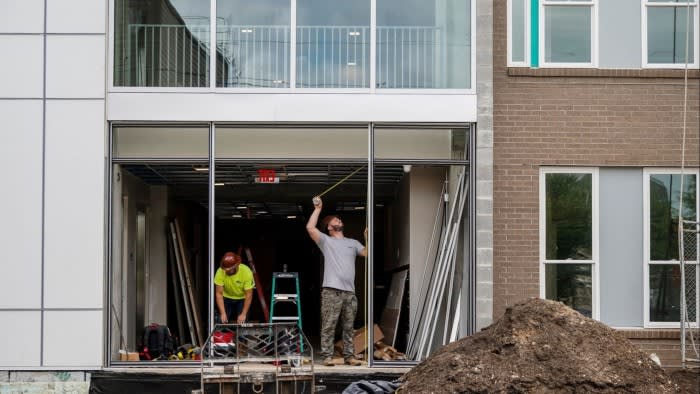Stay informed with free updates
Simply sign up to the US banks myFT Digest — delivered directly to your inbox.
The number of US borrowers in danger of defaulting a second time on commercial property loans is at the highest level in a decade, raising concerns that a bank practice known as “extend and pretend” is hiding growing systemic risk.
“They are kicking the can down the road,” said Ivan Cilik, a principal with accounting firm Baker Tilly’s financial services group. “I think lenders are trying to work out the problems with these loans, but if rates don’t come down borrowers are not going to be able to make payments.”
Regulators are growing increasingly worried about the rise in loan modifications and whether they are distorting loan markets.
Last month, researchers at the New York Fed published a paper warning that lenders appeared in many cases to be offering breaks to property borrowers for the sole purpose of postponing a write-off.
“Banks ‘extended-and-pretended’ their impaired commercial real estate mortgages in the post-pandemic period,” the study’s others wrote, and warned the generous modifications could lead “to credit misallocation and a build-up of financial fragility.”
That is leading to a rise in double defaults.
At the end of September, the value of commercial real estate “re-defaults” was up 90 per cent in the past year through September, to $5.5bn, an increase of $1bn in the past quarter alone, according to data released earlier this week by the banks and compiled by industry tracker BankRegData.
That is the highest level since 2014 of modified, non-performing commercial real estate loans, in which a borrower was under stress, received relief — either a forgiven payment, lower mortgage rate or some other modification — and is once again delinquent.
A decade ago, delinquent mortgages on both residential and commercial properties were still falling from financial crisis highs.
This time around, as interest rates have risen, delinquencies and defaults have been concentrated in commercial properties — primarily office buildings that have seen a drop in tenants since the pandemic, though also malls and more recently apartment buildings.
In all, the value of rising defaults is still relatively small compared to the nearly $2tn that banks have lent into commercial property. But the value of delinquent property loans to developers and investors has risen 25 per cent to $26bn in the first nine months of this year.
The loan modifications have helped banks to report a slowdown in the rate of new delinquencies in commercial real estate, with a 40 per cent increase this year.
Last month, a Moody’s review of property loan modifications found that banks offered little in terms of payment breaks, often less than 2 per cent off total payments in the majority of bank modifications.
Instead borrowers were allowed to delay missed payments, and given more time to pay them back.
Still, about only about a third of the modifications that banks have offered in the past year have resulted in the borrower defaulting for a second time.
But given the relatively modest relief and the fact that many modifications are new, Baker Tilly consultant Cilik expects re-defaults, and eventually losses for banks, will continue to rise.
“We are in the early part of the curve,” said Cilik. “If we continue to see rising delinquencies we will know that these modifications are just not working out.”
https://www.ft.com/content/185f7b12-5baf-42c4-bddd-1c723ed90a7b


